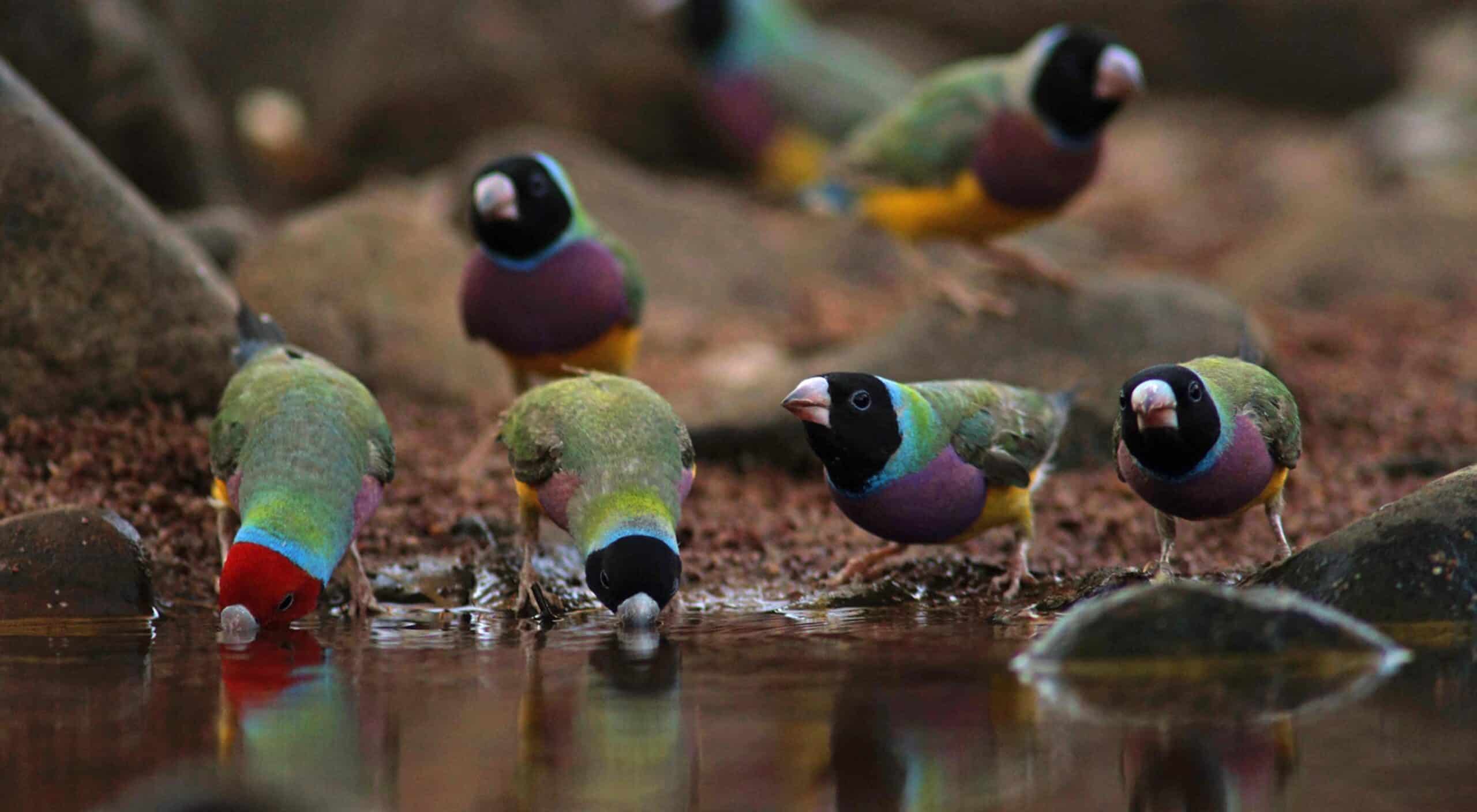Rare Australian animals have long captured the imagination of wildlife enthusiasts, scientists, and conservationists alike. From the shimmering coral reefs of the east to the desolate expanses of the outback, these extraordinary species are not only emblematic of Australia’s rich natural heritage, but they are also vital to maintaining ecological balance. As threats like climate change, habitat destruction, and invasive species escalate, the survival of these animals becomes increasingly uncertain. According to the Australian Government Department of Climate Change, Energy, the Environment and Water, over 500 native species are now listed as threatened, with many being critically endangered. These include iconic species such as the Northern Hairy-nosed Wombat and the Ghost Bat—species so rare that only a few hundred individuals remain in isolated, fragile habitats.
Understanding the diversity of Australia’s rare wildlife means venturing into vastly different ecosystems—from the ancient rainforests of Queensland to the vast red deserts of Central Australia. For example, the Australian Wildlife Conservancy manages over 12 million hectares of protected land, offering safe zones for creatures like the Bilby, Numbat, and Gouldian Finch. These safe havens are often surrounded by predator-proof fencing to keep out invasive species like foxes and feral cats, which are responsible for much of the decline in native fauna. Technological advances like drone surveillance and AI-powered camera traps, as supported by platforms like Bush Heritage Australia, are providing new hope in monitoring and conserving elusive species.
But the effort to save rare Australian animals isn’t limited to science and conservation groups. Community engagement and Indigenous knowledge play pivotal roles in these preservation efforts. The Indigenous Desert Alliance has integrated hundreds of rangers into national conservation frameworks, helping to monitor and protect endangered species through traditional land care practices. Likewise, organizations such as WWF Australia and Zoos Victoria run breeding and education programs that have brought back species once on the brink of extinction—like the Orange-bellied Parrot and the Leadbeater’s Possum.
Marine species are no less in peril. The Australian Institute of Marine Science warns of a 40% decline in reef biodiversity over the last three decades, which includes rare creatures like the Leafy Seadragon and the Scalloped Hammerhead Shark. Additionally, the CSIRO is actively researching endangered sharks such as the Speartooth Shark, with current data suggesting fewer than 250 individuals remain. While these marine species exhibit incredible adaptations—like camouflage and electroreception—their long-term survival is deeply entwined with ocean health and pollution control.
Even the least expected parts of the landscape, such as mangrove forests and eucalyptus woodlands, are home to astonishingly rare fauna. The Environment Protection Authority Victoria emphasizes that urban sprawl and industrial activity are rapidly encroaching on these ecosystems. Without swift and sustained intervention from organizations like Conservation Volunteers Australia, we risk losing not just individual species but entire ecological narratives shaped over millions of years.
These seven articles dive into this rich and urgent topic, offering a compelling look into the habitats, threats, adaptations, and conservation efforts surrounding rare Australian animals. With every fact, figure, and field study, they underscore a powerful truth: these creatures are not just unique, they are irreplaceable.
Hidden Gems of the Outback: Discovering Australia’s Rarest Creatures
The Arid Heart of Australia
Central Australia, dominated by deserts and semi-arid landscapes, is home to a surprising number of rare Australian animals. Among these is the critically endangered Night Parrot, once thought extinct until rediscovered in 2013. According to the IUCN, fewer than 250 mature individuals are believed to exist in the wild. The desert’s harsh environment has shaped unique adaptations, making survival a marvel of nature.
The Elusive Marsupials of the Inland
The Northern Hairy-nosed Wombat, one of the rarest marsupials globally, is found only in a small reserve in Queensland. With fewer than 300 individuals alive, it exemplifies the fragility of outback species. Conservation efforts have focused on predator-proof fencing and population monitoring, which have shown encouraging results over the past decade.
Rare Reptiles of the Red Centre
The Great Desert Skink, listed as vulnerable, is a burrowing reptile native to Australia’s desert regions. A 2022 report by the Department of Climate Change, Energy, the Environment and Water (DCCEEW) estimates populations in decline by 30% over the past 15 years, due to habitat fragmentation and invasive predators.
Birdlife on the Brink
Rare Australian animals also include the Princess Parrot, known for its vivid plumage and nomadic habits. Native to the desert’s edge, it remains difficult to monitor due to its elusive nature. Population estimates vary, but sightings have been increasingly scarce, prompting deeper survey efforts.
Challenges of Isolation
The vast distances and extreme conditions of the outback limit conservation access, which hinders research and protection. Funding remains a challenge. A 2021 Australian Wildlife Conservancy report highlights the urgent need for additional investment, particularly as climate change intensifies pressures on already marginal populations.
From Rainforests to Reefs: Unique Habitats of Australia’s Endangered Fauna
Biodiversity Hotspots in the Tropics
Australia’s Daintree Rainforest is one of the oldest continuously surviving tropical rainforests in the world and houses some of the most rare Australian animals. For instance, the Bennett’s Tree Kangaroo is found only in small pockets of this ecosystem. With deforestation threats ongoing, less than 1,000 individuals remain in the wild.
Coral Reefs as Refuge
The Great Barrier Reef, while known for marine biodiversity, also supports unique species like the Leafy Seadragon and the rare Scalloped Hammerhead Shark. The Australian Institute of Marine Science (AIMS) estimates reef biodiversity has declined by nearly 40% in three decades due to bleaching and pollution, making these rare species even more vulnerable.
Endemics of the Wet Tropics
The Southern Cassowary, another iconic but endangered rainforest resident, plays a vital role in seed dispersal. Only about 4,000 individuals remain in Queensland’s tropical north. Road collisions and habitat clearing continue to be leading threats, with about 20–30 cassowaries killed annually by vehicles.
Mangrove and Estuarine Zones
Northern Australia’s estuarine areas are home to the Speartooth Shark and Northern River Shark, both critically endangered. Research by CSIRO indicates that fewer than 250 individuals exist for each species. These sharks are poorly understood, and further ecological research is urgently needed.
Conservation Through Ecosystem Protection
Integrated approaches like ecosystem-wide preservation are crucial. Protected areas now cover 19.7% of Australia’s land, yet many rainforest habitats remain outside these zones. Without urgent protection of entire ecosystems, rare Australian animals may continue to disappear before we can fully understand their role.
Masters of Disguise: Rare Australian Animals with Astonishing Adaptations
Camouflage Kings of the Forest Floor
The Leaf-tailed Gecko is one of nature’s finest masters of disguise. Native to Queensland’s rainforests, its leaf-like tail and mottled skin allow it to vanish into its surroundings. However, habitat destruction has reduced its range, and some subspecies are listed as vulnerable under Australia’s EPBC Act.
Marine Mimics and Sea Camouflage
The Weedy Seadragon and its cousin, the Leafy Seadragon, possess filamentous appendages that perfectly mimic seaweed. These marine species are endemic to Australia’s southern coastlines. A 2020 marine biology study noted that population densities have declined by 30% over the past decade in urban reef zones due to water pollution.
Color-Changing Reptiles
Some skinks and geckos in arid regions can adjust their skin coloration to match changing light or soil tones. While not as famous as chameleons, these reptiles use thermal regulation and camouflage simultaneously. Data from the Australian Herpetological Society suggests several rare species remain undocumented due to their elusive nature.
Mimicry in the Bird World
The Tawny Frogmouth, often mistaken for a tree branch, is a nocturnal bird that relies heavily on stillness and cryptic coloring. Though not yet endangered, populations are declining in suburban regions due to light pollution and road fatalities. Its role as a predator of nocturnal insects is critical to ecosystem balance.
Adaptive Traits at Risk
Many of these unique adaptations have evolved over millennia, but rapid habitat loss and climate shifts are outpacing the animals’ ability to adjust. As their environments vanish, so do these evolutionary marvels. Conservationists argue that preserving rare Australian animals means preserving the evolutionary stories they embody.
The Nocturnal and the Elusive: Creatures of the Night Down Under
Silent Hunters of the Night
The Ghost Bat, Australia’s only carnivorous bat, uses acute hearing and echolocation to hunt in total darkness. With fewer than 10,000 individuals remaining, this species is listed as vulnerable. A 2022 study noted a 70% drop in numbers in certain mining areas of Northern Territory due to cave destruction.
Night-Parrot Mysteries
Once considered extinct, the Night Parrot’s rediscovery shocked the scientific community. But it remains incredibly rare. Documented sightings are below 50 since 2013, making it one of the world’s most elusive birds. Its survival depends heavily on controlling feral cats and preserving spinifex grasslands.
Marsupial Ghosts
The Leadbeater’s Possum is a tiny, nocturnal marsupial found only in Victoria’s Central Highlands. Listed as critically endangered, its numbers have dwindled to under 1,500 due to bushfires and logging. These rare Australian animals are now the focus of intense conservation breeding programs.
Amphibians of the Moonlight
The Kroombit Tinker Frog is a tiny species found only in Queensland’s Kroombit Tops National Park. With fewer than 200 individuals documented, chytrid fungus and climate change are major threats. It is currently ranked as one of the most endangered frogs in the country.
Threats in the Dark
Nocturnal species are especially vulnerable to human activity, which tends to disrupt nighttime habitats with light, noise, and infrastructure. A 2021 study published in Global Ecology and Conservation found that 28% of Australia’s nocturnal fauna is experiencing significant population declines due to anthropogenic disturbances.
Conservation Heroes: Efforts to Save Australia’s Most Vulnerable Species
Sanctuaries and Predator-Proof Zones
Organizations like the Australian Wildlife Conservancy have created predator-proof sanctuaries across over 12 million hectares. These zones protect species like the Bilby and Numbat from foxes and feral cats. Recent census data indicates population growth of up to 400% within fenced areas.
Captive Breeding Success Stories
Zoos Victoria has led successful breeding programs for rare Australian animals such as the Orange-bellied Parrot. Once down to 50 individuals, captive breeding and reintroduction efforts helped increase wild numbers to over 150 by 2023. These projects rely on long-term funding and genetic monitoring.
Community-Led Conservation
Indigenous ranger programs are central to land management, especially in northern Australia. The Indigenous Desert Alliance, for example, employs over 500 rangers who monitor species like the Greater Bilby and Gouldian Finch. This community-centered approach ensures cultural knowledge is integrated into conservation.
Legislation and Legal Protections
Australia’s Environment Protection and Biodiversity Conservation (EPBC) Act currently lists over 500 species as threatened. While the act provides legal protections, enforcement remains uneven. A 2022 audit by the Australian National Audit Office criticized gaps in compliance and monitoring.
Innovation in Wildlife Tech
Technologies such as AI-driven camera traps and drone surveys are revolutionizing wildlife tracking. These tools help identify previously unknown populations of rare Australian animals and support faster data collection. Government funding for such tools rose by 15% in 2021, reflecting their growing importance.




